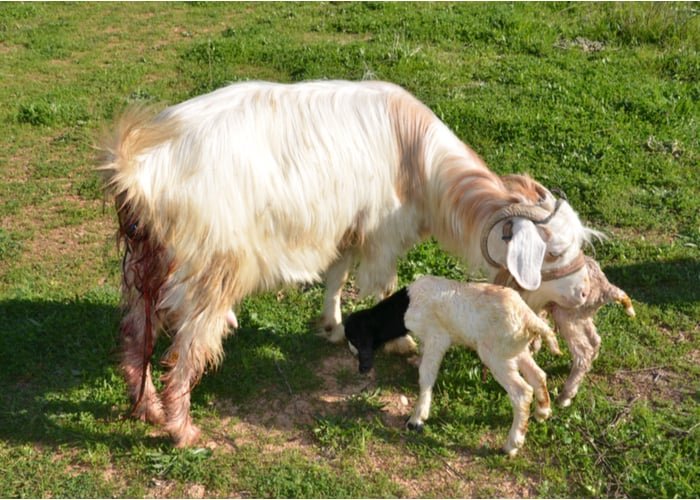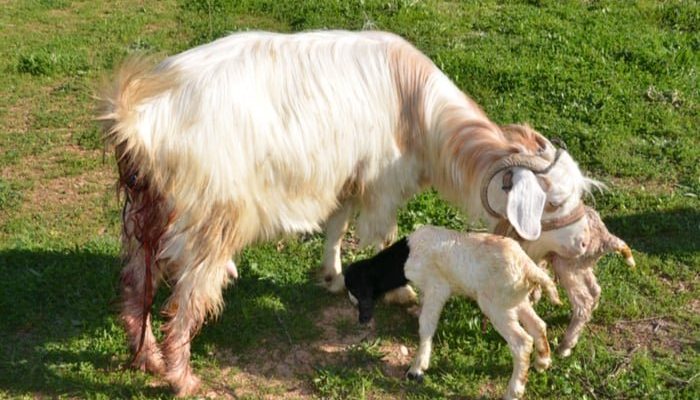
Let’s break this process down. Think of it like a recipe: you need all the right ingredients and the right timing to create something wonderful. First, we’ll explore the ins and outs of gestation in Lamancha goats. Then, we’ll dive into what to expect during kidding and how to provide the best care for the little ones that follow. Grab a cup of coffee, and let’s get started!
Understanding Lamancha Goat Gestation
Lamancha goats typically have a gestation period of about 150 days. This timeframe can vary slightly, but it’s generally reliable. Think of it as the time it takes to bake a cake—if you rush it, the results might not be as good. During this time, you’ll want to keep a close eye on your doe, providing her with all the care and nutrition she needs.
Nutrition is crucial during gestation. Pregnant Lamancha does require a balanced diet that includes hay, grains, and minerals. A good rule of thumb is to start increasing her feed about two months before she’s due. This helps ensure that she has enough energy for the rigors of birthing and nursing. Remember, a happy, healthy goat means happy, healthy kids!
As the due date approaches, watch for signs that she might be getting ready to kid. These can include nesting behaviors, restlessness, and sometimes even a change in appetite. It’s like when you’re about to host a big party; you get a little jittery and start tidying up!
Preparing for Kidding
Kidding can be an exhilarating time, but a little preparation goes a long way in making it a smooth experience. Before the big day, set up a clean, quiet, and comfortable space for your goat. This is often called a kidding pen. It should be away from other animals to help minimize stress for the birthing mother.
Make sure the kidding pen has clean straw or bedding for warmth and comfort. You might want to gather some supplies ahead of time, such as towels, iodine for umbilical cord dipping, and a heating lamp for cooler days. Here’s a checklist to consider:
- Clean bedding
- Towels for drying (in case she needs help)
- Iodine for disinfecting the umbilical cord
- Heating lamp (small kids can get cold easily)
When the time comes, you might notice her becoming vocal or displaying strong contractions. This is often a signal that kidding is imminent. Be sure to stay close, but don’t crowd her. Remember, just like you wouldn’t want a crowd during your big moment, she needs her space too.
The Kidding Process
As the doe goes into labor, you’ll want to be ready for the moment when kids arrive. The actual *kidding* can take anywhere from a few minutes to several hours. Typically, the first kid will present with its front legs and nose first. If everything goes smoothly, you should see the first kid arrive shortly thereafter.
Be prepared to assist if needed, but often, does know what to do. Once the kid is born, the mother will start licking it to help stimulate its breathing and bonding. This bonding is vital because it starts the nurturing process right away. If the doe seems overwhelmed or there are multiple kids, you might need to help a little more.
Once the kids are born, it’s essential to make sure they start nursing. They’ll need that first milk, called colostrum, which is packed with nutrients and antibodies that help protect them in their early days. If the mother isn’t able to nurse them right away, don’t hesitate to step in and help feed them until everything settles down.
Caring for Newborn Kids
Once the kids are up and about, their care becomes your top priority. First and foremost, ensure they stay warm and dry—newborn goats can’t regulate their body temperature very well. Make sure they’re away from drafts, especially in cooler weather.
You should also monitor their nursing habits closely. Ideally, each kid should nurse from their mother within the first few hours. If you notice any kid struggling to latch on or if the mother has a lot of kids to care for, you may need to supplement their feeding with a bottle of goat milk. Just like a human baby, they need to eat regularly to grow strong and healthy.
Another important aspect of *kid care* is providing a safe environment. Check the pen for hazards that could harm these curious little creatures. They’re like toddlers, always getting into things, and they can easily get themselves hurt if you’re not careful.
Monitoring Growth and Health
As your *kids* grow, keep a close eye on their health. Healthy kids are active, curious, and playful! Make sure they get regular check-ups and vaccinations as recommended by your veterinarian. This is essential to prevent diseases and ensure they grow strong.
You might also want to weigh them weekly, especially in the first few months. Just like measuring a cake’s rise, tracking their growth helps you ensure they’re developing as they should. A healthy gain is usually around 1/2 to 1 pound per day during their first months. If you notice a kid isn’t gaining weight or seems lethargic, give your vet a call.
Socialization is important too. Kids are social creatures, so allowing them to interact with their mother and other goats is crucial for their mental development. Just like kids, they thrive in a nurturing and stimulating environment.
Common Challenges and Solutions
Every goat owner may run into a few challenges during the breeding and birthing process. One common issue is *dystocia*, which is when a kid has trouble being born. If you notice unusual signs during labor and feel like something’s off, don’t hesitate to contact a vet for advice. Early intervention can make a huge difference.
Another challenge can arise with *mastitis*. This is an infection in the udder that can make it hard for the kids to nurse. Watch for any signs of swelling or redness, and consult your vet if you suspect this might be an issue. Keeping the udder clean during and after kidding can help prevent this.
Stress can also be a problem, so it’s essential to keep your goats calm during the kidding process. If the mother is anxious, it can affect her ability to bond with her kids. Try to keep the environment quiet and peaceful during this critical time.
Final Thoughts on Breeding Lamancha Goats
Breeding Lamancha goats is a journey filled with love, learning, and plenty of joyful moments. From gestation to caring for those adorable kids, every stage requires attention and care. So whether you’re a newbie or have some experience under your belt, remember that patience is key.
Take the time to understand their needs and adapt your approach as necessary. Enjoy the process of watching new life unfold, and don’t hesitate to reach out to fellow goat owners or vets for advice along the way.
With the right preparation and care, your Lamancha goats will thrive, and before you know it, you’ll be celebrating the arrival of new kids in your herd!

